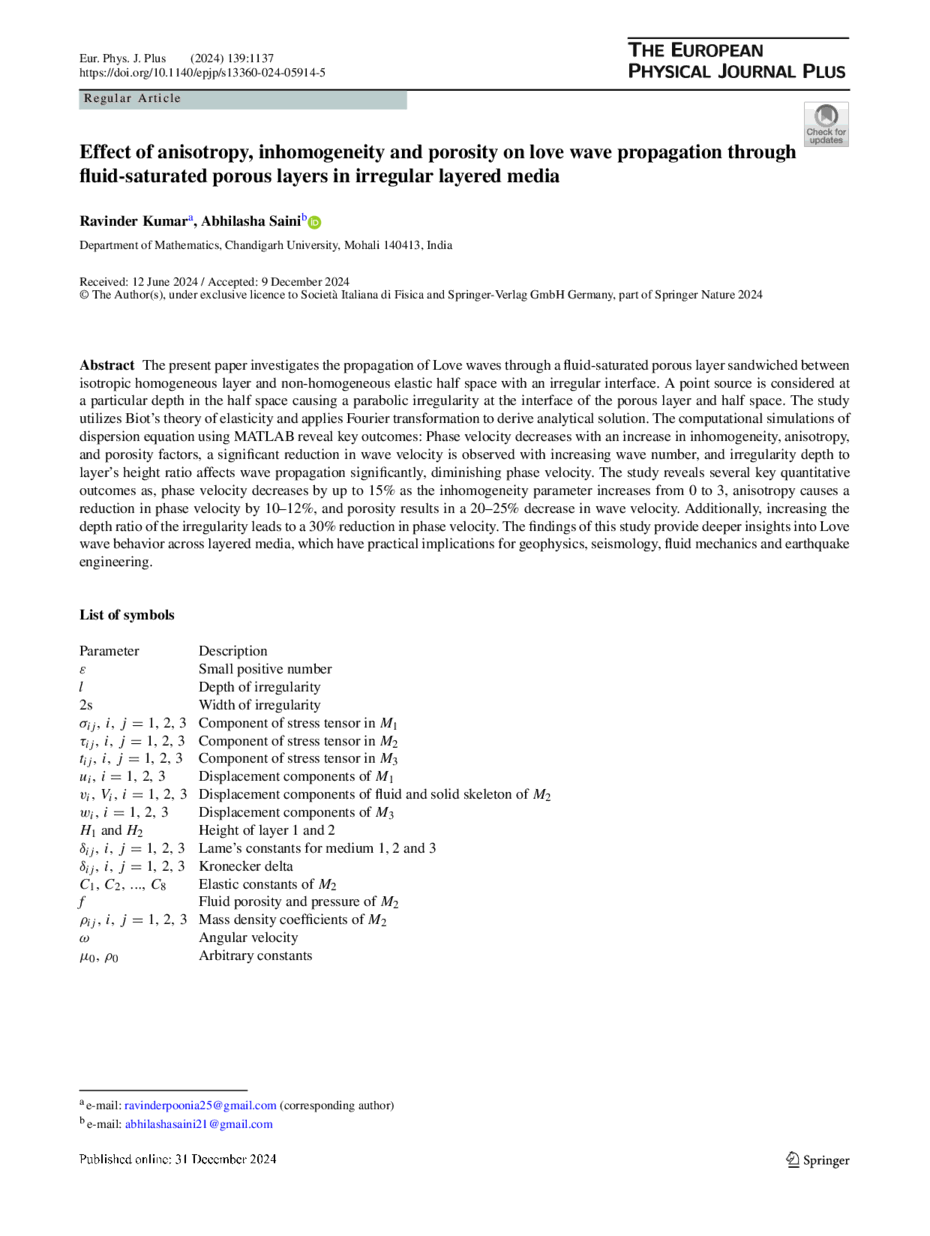https://doi.org/10.1140/epjp/s13360-024-05914-5
Regular Article
Effect of anisotropy, inhomogeneity and porosity on love wave propagation through fluid-saturated porous layers in irregular layered media
Department of Mathematics, Chandigarh University, 140413, Mohali, India
Received:
12
June
2024
Accepted:
9
December
2024
Published online:
31
December
2024
The present paper investigates the propagation of Love waves through a fluid-saturated porous layer sandwiched between isotropic homogeneous layer and non-homogeneous elastic half space with an irregular interface. A point source is considered at a particular depth in the half space causing a parabolic irregularity at the interface of the porous layer and half space. The study utilizes Biot’s theory of elasticity and applies Fourier transformation to derive analytical solution. The computational simulations of dispersion equation using MATLAB reveal key outcomes: Phase velocity decreases with an increase in inhomogeneity, anisotropy, and porosity factors, a significant reduction in wave velocity is observed with increasing wave number, and irregularity depth to layer’s height ratio affects wave propagation significantly, diminishing phase velocity. The study reveals several key quantitative outcomes as, phase velocity decreases by up to 15% as the inhomogeneity parameter increases from 0 to 3, anisotropy causes a reduction in phase velocity by 10–12%, and porosity results in a 20–25% decrease in wave velocity. Additionally, increasing the depth ratio of the irregularity leads to a 30% reduction in phase velocity. The findings of this study provide deeper insights into Love wave behavior across layered media, which have practical implications for geophysics, seismology, fluid mechanics and earthquake engineering.
Copyright comment Springer Nature or its licensor (e.g. a society or other partner) holds exclusive rights to this article under a publishing agreement with the author(s) or other rightsholder(s); author self-archiving of the accepted manuscript version of this article is solely governed by the terms of such publishing agreement and applicable law.
© The Author(s), under exclusive licence to Società Italiana di Fisica and Springer-Verlag GmbH Germany, part of Springer Nature 2024
Springer Nature or its licensor (e.g. a society or other partner) holds exclusive rights to this article under a publishing agreement with the author(s) or other rightsholder(s); author self-archiving of the accepted manuscript version of this article is solely governed by the terms of such publishing agreement and applicable law.





